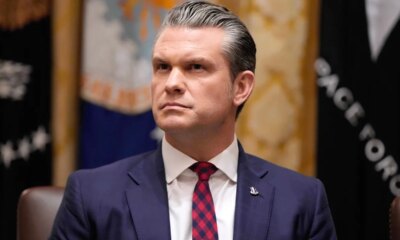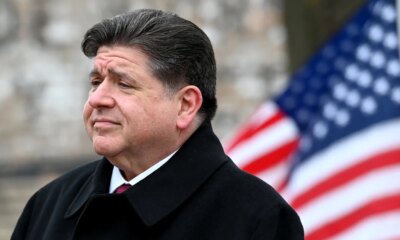NATIONAL WEATHER SERVICE
Radar shows heavy rain over Oahu earlier today.
UPDATE: 6:45 p.m.
The flood watch for Kauai, Oahu, and Niihau remains in effect until late Monday night, according to the National Weather Service in Honolulu.
”A cold front stalling over the western Hawaiian islands through Monday will increase rainfall activity across the western half of the state,” the updated flood watch says. “These showers may become locally heavy at times with isolated thunderstorms.”
NWS forecasters said “flood-prone roads and other low-lying areas may be closed due to elevated runoff and overflowing streams. Urban areas may receive more significant flooding and property damage due to rapid runoff.”
Forecasters said that a front that has stalled out near Oahu “will hold its position through the afternoon before moving slowly back to the north and west tonight and Monday. This will bring continued chances for moderate to heavy rain to the western end of the state through tomorrow. “
They said the chance of rain will decrease Monday night into Tuesday, but returns Tuesday night into Wednesday “as the remains of the current front fuse with a new one and they move back into the western part of the state.”
Don’t miss out on what’s happening!
Stay in touch with breaking news, as it happens, conveniently in your email inbox. It’s FREE!
However, the weather service forecasters note, “Confidence in location is not as high with this next system, as guidance has trended away from bringing it as far east as Oahu.”
Heavy rain across Oahu today causes localized flooding, including on Queen Street, which which was shut this afternoon between Ward Avenue and Kamakee Street.
3:42 p.m.
The flood advisory of Oahu will expire at 3:45 p.m. today.
Radar indicates that heavy rain has diminished for now, so the flood advisory has been canceled.
Meanwhile, a flood watch remains in effect until 6 a.m. Tuesday for Oahu, Kauai and Niihau.
2:30 p.m.
A high surf warning has been issued for the west-facing shores of leeward Hawaii island, while a high surf advisory has been issued for the north- and west-facing shores of Oahu, Kauai, Molokai and Niihau, and the north-facing shores of Maui.
A large, medium period west-northwest swell between 290 and 300 degrees is building this afternoon along portions of the north- and west-facing shores. Surf is expected to peak late this evening then gradually lower Monday afternoon.
The high surf warning for leeward Hawaii island is in effect from 6 a.m. Monday to 6 a.m. Tuesday. Expect dangerously large breaking waves of up to 12 feet. Surf will build late tonight and peak Monday afternoon.
“Stay away from the shoreline along the affected coasts. Be prepared for road closures. Postpone entering or leaving channels affected by the high surf until the surf subsides,” forecasters report.
EARLIER COVERAGE
Oahu is under a flood advisory until 3:45 p.m. today following flooding caused by excessive rainfall.
“Ponding of water in urban areas is likely. Minor flooding on roads, poor drainage areas, and in streams. Some low-water crossings may become impassable,” according to National Weather Service forecasters.
At 12:50 p.m. today, the radar indicated areas of heavy rain developing and traveling northeast of Oahu.
“While there may be a brief lull in rainfall, a larger batch of showers is moving up from the southwest and is expected to impact the island for the next few hours,” according to forecasters.
Rain was falling at a rate 0.5 to 1.1 inches per hour with the possibility of 2 inches per hour. The entire island of Oahu is expected to experience flooding, according to NWS.
The advisory may be extended beyond 3:45 p.m. if flooding persists.










































